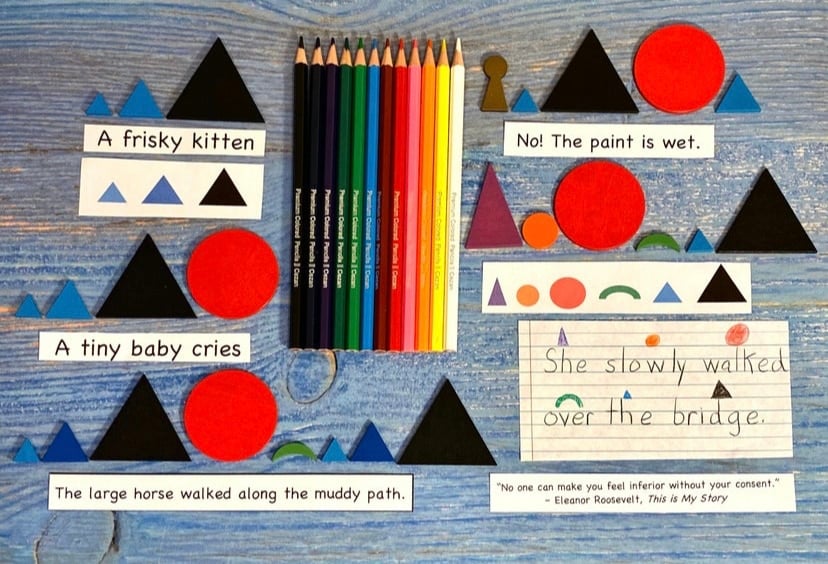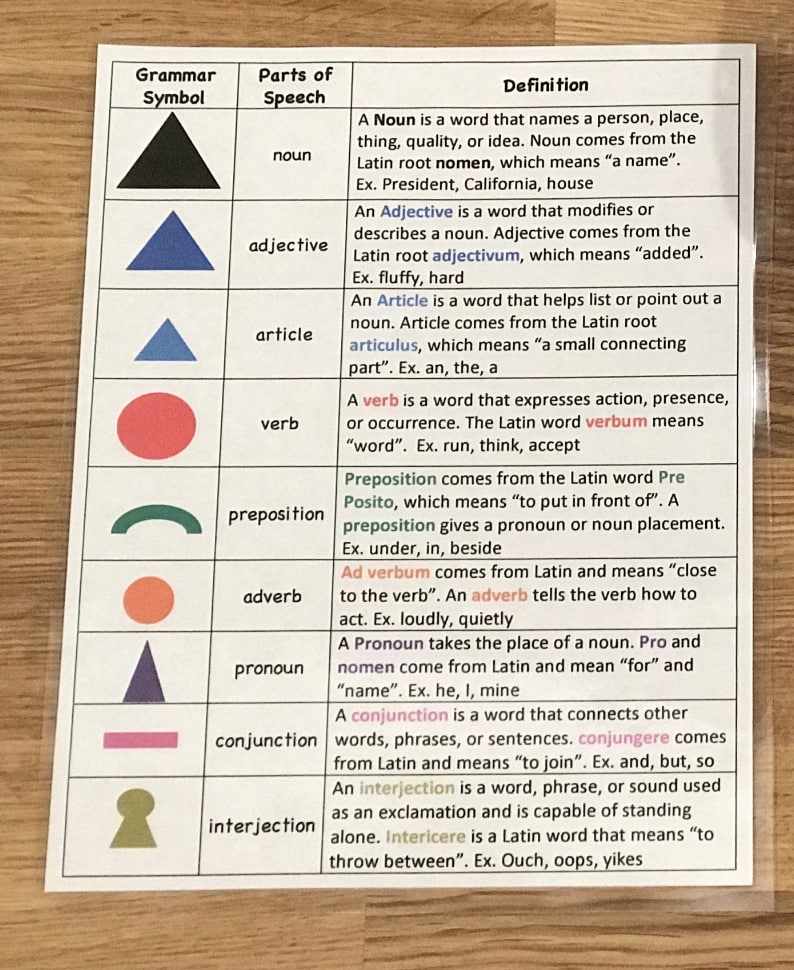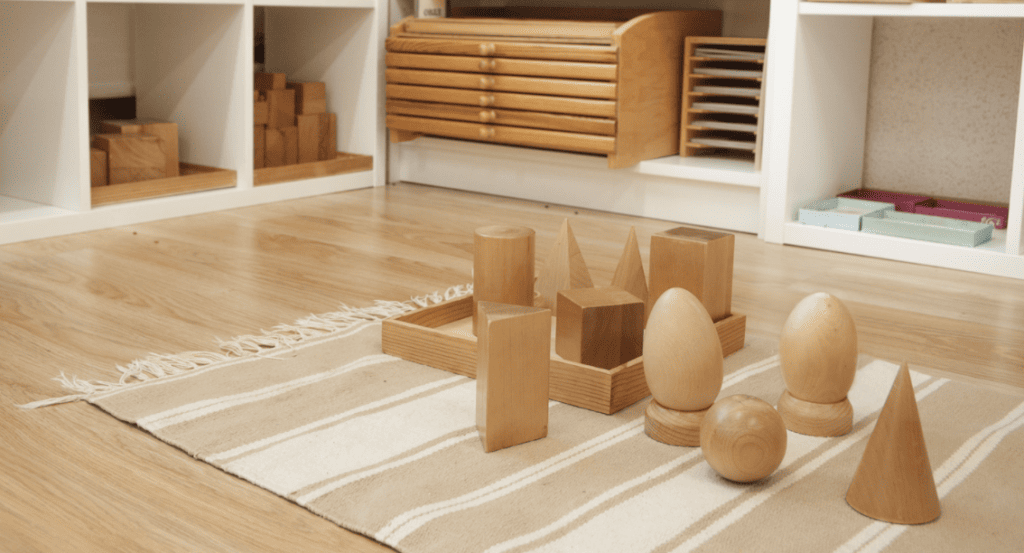Grammar and active learning can often appear as two irreconcilable ideas, but in the
In
“How different grammar will seem to the young pupil, if, instead of being the cruel assassin that tears the sentence to pieces so that nothing can be understood, it becomes the amiable and indispensable help to ‘the construction of connected discourse’!”
MariaMontessori

Montessori for Today picks out furniture, educational tools, toys and lifestyle items that we think are the best and most exciting, based on independent research and careful consideration. On some occasions we earn revenue (at no additional cost to you) if you click the links and buy the products. But this doesn’t affect what we choose to highlight and we will never let it bias our coverage.
How is Grammar introduced in Montessori ?
Montessori grammar helps students consider the necessity of each part of speech for communication. It encourages them to explore the essence of language. Students learn how language has originally come about to solve human problems, and are themselves introduced to the specific parts of the language in the context of real-life problems.
For example, when introducing adjectives, the guide might ask the students to bring her a book, and then afterwards tell them that this was not the book she had in mind.
Soon, perhaps after a couple of attempts, the children would start demanding more information. The guide can then explain the need for describing words, adjectives, and then demonstrate that notion by giving them, one at a time, the adjectives that describe that book she has in mind. The book is large. It is heavy. It’s also green. Were they getting closer now?
What are Montessori Grammar Boxes?
After students are introduced to a new part of speech, they start working through its respective Grammar Box.
You will usually find Grammar Boxes taking up a lot of space on the shelves of

There are 9 sets Grammar Boxes, each focusing on one part of speech: article, noun, adjective, verb, adverb, pronoun, preposition, conjunction, and interjection. Each box builds on the one before it.
Related parts of speech are clustered together in each of the boxes. For example, the Article Grammar Box, which is the very first box, pairs articles and nouns to introduce noun phrases (e.g., an apple, the duck, etc.).
The next box, the Adjective Grammar Box, adds in adjectives to describe the nouns (e.g., a green apple, the lazy duck, etc.). The box after adds in verbs and so on.
Each Grammar Box has one set of large cards, which features two short sentences or phrases, as well as sets of smaller cards that have individual words on them. Each of the smaller cards is color-coded according to the part of speech it represents.
What do the Montessori grammar symbols mean?
Every part of speech has a symbol. Each symbol has a meaning that makes them easy to remember and use. It also corresponds to their unique story.
Nouns are represented by black pyramids. Pyramids are one of the oldest human structures to ever exist. The color black is meant to represent carbon, which is thought to be the first mineral that humans have discovered. This is done to symbolize how, in describing objects and animals, nouns were among the first words that humans have had to use.

Verbs, on the other hand, are represented by a red sphere. This is meant to depict the sun’s shape and energy, which is the main source of all energy on Earth. The verb, just like the sun, endows objects with movement and life.
Most of the boxes are linked and related to verbs or nouns, which is reflected by the symbols as well. Adjectives (small dark blue pyramid) and Articles (smaller light blue pyramids), for example, look similar because they both belong to the Noun family.
As students put together the symbols, they start to visualize the grammatical patterns and links that often repeat themselves in language.
How to use a Montessori Grammar Box
After the guide has introduced the part of speech (adjectives, in our example), it’s time to visit the Grammar Box.
First, the student reads a sentence from one of the large cards. They act out the action from that card. For example, in an adjective lesson, this sentence could be “Find five colored pencils.” After the student performs the action, they reconstruct that sentence using the small color-coded cards. They match the grammar symbols with every word.
This sequence is repeated again with a second large card. The guide would here try to ask the student about the difference between the first and second card.
The second card would be something like, “Find four blue pencils.” The words that change always belong to the part of speech that this particular Grammar Box is isolating.

As the student attempts to recreate the second sentence, the guide encourages them to ponder the function that those different words (which have the same color-coding and symbol) fulfill. What is the pattern? What information do those words tell us?
To extend the learning further, the students start going through the set of Command Cards in the Grammar Box. These cards help expand the students’ understanding of the specific part of speech that the box targets.
This set of Command Cards usually contains wild or silly commands, asking the students to do something they wouldn’t usually be allowed to do. A Command Card might prompt them to work together to create a short drama scene or just to throw an eraser out of the door!
In short, the Grammar Boxes provide many opportunities for students to bring grammar into life. They make grammar rules and patterns tangible and visible. They also encourage students to use their whole bodies, as they go through the process of living and creating through grammar.







